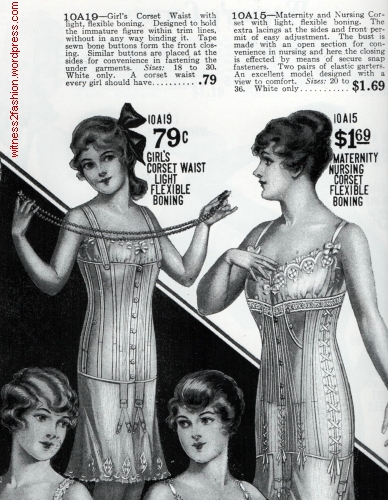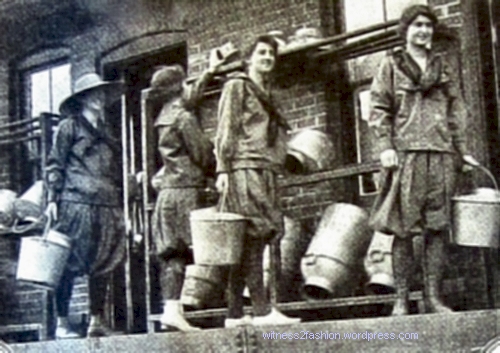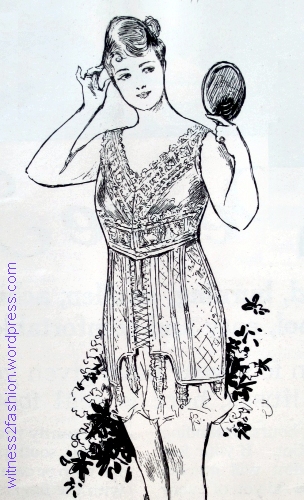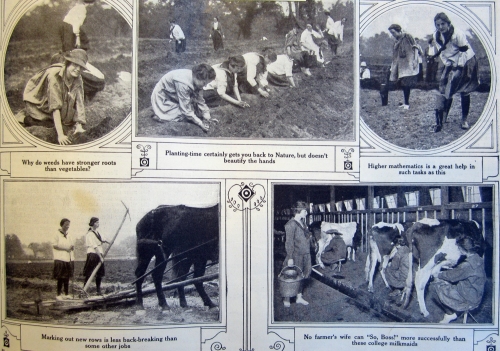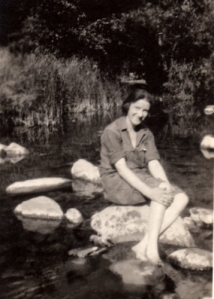I’ve been getting some wonderful comments on older posts, so I want to share some related pictures.
Twentieth Century Corsets for Girls:
“10A19: Girl’s flexible corset waist with light, flexible boning. Designed to hold the immature figure within trim lines without in any way binding it. . . . Sizes 18 to 30. [Misses’ corset waists should be ordered 2 inches less that your waist measurement over your dress — p.146.] A corset waist every girl should have. 79 cents.”
This girl’s corset was sold by Perry, Dame & Company, in their 1917 catalog.
Dinah found photos online of more corsets for girls — not from the turn of the century, but from a Sears catalog dated 1923! The image is in Google online, so the number of times it can be viewed is limited. Instead of using a link, I found it by doing a google search for the words “sears corset for girls 1923 Olian.” The image is from JoAnne Olian’s Children’s Fashions 1900-1950.) [Caution: My McAfee Secure Search says do not click on the Sears Catalogs Online links — there may be security issues! ]
How to Sit in a Mini Skirt:
Nancy N remembered many of the disadvantages of wearing a miniskirt.
“I wore my hems somewhere between the mid knee and micro mini length — long enough so that when you sat down your underwear wasn’t sitting on the chair! Then I discovered how flattering the extra long midi was, so it DIDNT hit the fattest part of the calf. Short skirts were cute but such a challenge .. What to do climbing stairs in the mall? Sitting for long stretches with your knees together is tiring! And bending down to file papers all day is no fun. Thank god for the pantsuit!”
One discomfort was that you had to sit with your knees clamped firmly together. This photo of a group of Sea Scouts shows the [more modest end of ] the range of problems miniskirts caused:

Sea Scouts, California Post 601, 1968. Photo by Bill Owens, from Alison Lurie’s book, The Language of Clothes. Note that the girls are wearing an officially approved uniform — usually more conservative than teenagers’ ordinary dress.
In the 1960s, I thought of this as “the candidate’s wife” problem; when a woman in a short skirt sits on a raised platform, with her knees or ankles at the eye level of the audience, she has to sit very carefully. These young women seated at the far right are not yet ready for the campaign trail:
The girls in the center have crossed their legs at the knees, which is also not wise if you’re sitting higher than the audience — unless you want them to see up your skirt to the hip:

Sitting like this would hide your crotch, but sometimes exposed your stocking tops, your garters, or worse, your thigh control panty girdle.
These girls have mastered the basics of sitting in public in a miniskirt. The more advanced miniskirt posture requires you to also sit at a slight angle, so your crossed ankles are not directly under your knees. Tucking your crossed feet under the chair tilts your knees and thighs downward, too.
Members of the Kennedy clan demonstrate graceful sitting here. Scroll down to the group pictures.
The Scandalous Can-Can
Dinah also made some interesting points in a different comment on Underpinning the Twenties — about how difficult it was for parents raised in the 1890s to accept the fashions of the 1920s, which were so radically different from their own corseted and restrictive youth. Also, she mentions that [like the young women above] Victorian women dancing the can-can had to cross their raised leg — because they were wearing crotchless bloomers. These are more formally called “open drawers;”
A pair of open drawers that belonged to Queen Victoria were sold at auction for over 6,000 pounds in 2014 (read the article in Victoriana here ); this article in the Telegraph shows some of her underwear, now given “national designated status.” These garments date from the 1890s, when the queen had a very large circumference.
Women in Gym Bloomers Allowed in Golden Gate Park: 1915
The San Francisco Chronicle runs an article every Sunday called The Wayback Machine, by Johnny Miller, who goes through “the archives of 25, 50, 75, and 100 years ago to bring us glimpses of the past.” On January 4, 2015, he found this article from January 8, 1915, heralding the end of the bloomer ban:
“As far as the Park Commissioner is concerned, ‘the bloomer girls’ will be allowed to play ball in Golden Gate Park, notwithstanding Mrs. Grundy to the contrary. For some time these young misses have been an attraction on the park diamonds where they could be depended upon to put on a stirring game. And then Mrs. Grundy appeared on the scene and the games ceased. But now they will resume for the park Commission sees no harm in young girls, attired in their gymnasium suits, disporting on the park greens.”
A less sexually provocative outfit would be hard to imagine. Perhaps the fact that the female baseball players’ stocking-clad legs were visible was the reason “Mrs. Grundy” objected to games in Golden Gate Park in 1915.
That brings us back to Dinah’s comments about the conflict between Victorian adults and their 20th century offspring:
“Another problem was that in the 1920s there was a break from the 19 century view that even adult children must do as their parents dictated. The fact that adult young girls were ignoring their mother’s advice about proper corsetry was in itself terrible. Do the sums – a 21 year old girl in 1925 would have been born in 1904, to say a mother aged 25; The mother would have been born in 1879. When the mother was a teenager in the 1890s the wasp waist was in full swing. She probably expected the same rigid and tight corset for her daughter?”
Thanks to all you wonderful readers who share your knowledge and keep these conversations going!

